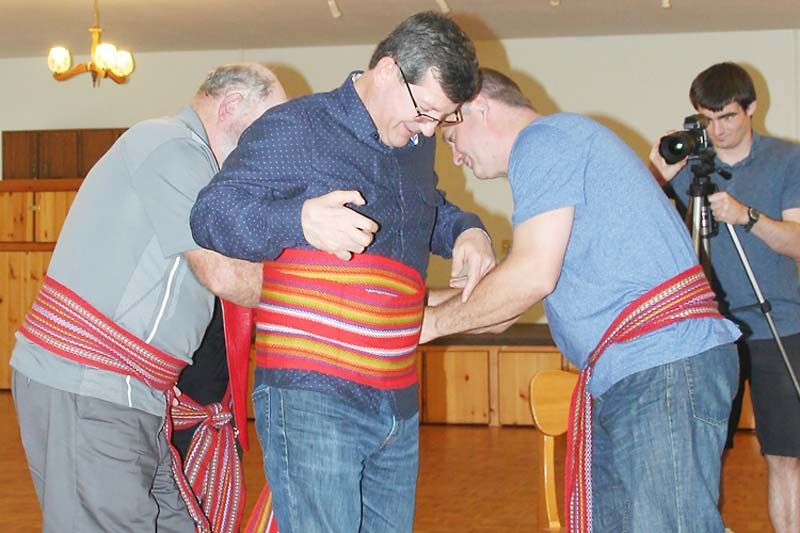Craig Bakay | Oct 26, 2017
One of the more recognizable icons of Metis, and indeed Canadian, culture is the traditional sash.
Yes, the colours do signify certain things. For example, blue and white are the colours of the National Metis Flag. Red and white are the colours of the Metis Hunting Flag. Black symbolizes the dark period after 1870 when the Metis Nation had to endure dispossession and suppression at the hands of the Canadian government. Yellow is for the prospect of prosperity. Green signifies fertility, growth and prosperity and moving forward to claim the Metis’ rightful place in Canadian history.
Originally, the sash was essentially a belt for keeping the large capote (overcoat) that the voyageurs wore on the fur trail.
But, it was much more than that. In the bush, it became the Metis answer to the Swiss army knife.
“If you had a loose button, you took a thread from the end of your sash and sewed it back on,” said Senator Robert Lloyd. “But maybe its biggest use was to help prevent a hernia.
“In those days, you had to be able to carry 90 pounds of furs and portage with them. “If you couldn’t carry 90 pounds, you didn’t get the job.” Lloyd, along with Veterans Council Senator Guy Mandeville, then went on to list a myriad of other uses in rapid succession. “It was used as a lifeline if someone fell into the water,” Lloyd said. “And they often used to tie one end to the canoe so they wouldn’t fall out or at least so they’d still be attached to the canoe if they did fall out in the rapids.
“There’s no set length or width so they could be used for anything from a horse blanket to a makeshift bridle.” “Anything you could dream up,” said Mandeville. “They could be a towel, facecloth, even diapers sometimes. “There was even a tug-o-war game where you’d tie the ends around each other’s neck and try to pull the other guy down.” They were often used as a handy firstaide kit, becoming a sling or knee wrap in the bush.
More Stories
- No Winner Yet in Catch The Ace But Fundraising Target Met
- South Frontenac Food Bank Opens Second Location in Battersea
- Sharbot Lake Pentecostal Church Anniversary - 1925-2025
- Frontenac Holistic Health Fair - September 20 At Storrington Centre
- Odd Year For Real Estate - But Sales Are Steady Year Over Year
- 193rd Kingston Fall Fair
- Kim Phuc - the Napalm Girl - To Visit Flinton In November
- South Frontenac Council - September 2
- Sticker Shock - EV Charging Station To Cost North Frontenac Township
- 30th Anniversary Verona Car Show

